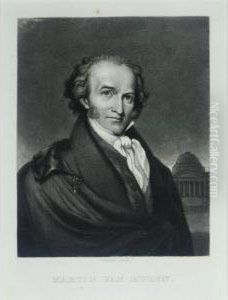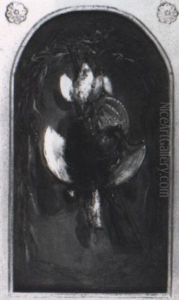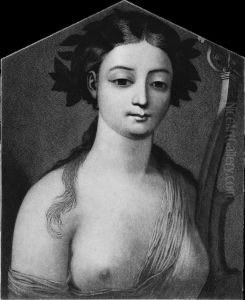John Sartain Paintings
John Sartain was a prominent English-American artist, engraver, and publisher, whose contributions to the American art and printmaking scene in the 19th century were influential. Born on October 24, 1808, in London, England, Sartain embarked on his artistic journey at a young age, showing a keen interest in engraving. He initially apprenticed under his father, who was a skilled maker of frames and looking-glasses, thus gaining early exposure to the craftsmanship and aesthetic considerations of art and design. Sartain's talent and ambition soon led him to pursue more formal training in engraving, and by the age of 22, he had established himself as a proficient engraver on metal, contributing to various publications in London.
Sartain's move to the United States in 1830 marked the beginning of a new chapter in his career. Settling in Philadelphia, Pennsylvania, he quickly became an integral part of the American art community. His work ranged from small book illustrations to large, highly detailed steel engravings that captured the complexity and beauty of American and European scenes. Sartain was also instrumental in introducing the mezzotint engraving technique to America, a method that allowed for the creation of softer, more nuanced tonal variations than were possible with traditional engraving methods. This technique became particularly popular in the reproduction of portraits and historical scenes, areas in which Sartain excelled.
Beyond his work as an engraver, John Sartain was deeply involved in the cultural and educational aspects of the art world. He served as the editor and publisher of several influential art and literary magazines, including 'Sartain's Union Magazine of Literature and Art,' which provided a platform for American artists and writers to showcase their work. His commitment to the arts also led him to play a key role in organizing the art department of the Centennial Exposition held in Philadelphia in 1876, a landmark event in the promotion of American art and industry.
John Sartain's impact on American art extended beyond his own creations. He was a mentor to many young artists, imparting his skills and knowledge to a new generation. His contributions to the art and cultural scene were recognized by his contemporaries, and his legacy continues to be celebrated. Sartain passed away on October 25, 1897, in Philadelphia, leaving behind a rich body of work that remains appreciated for its technical skill and artistic beauty. His life and career exemplify the role of the artist as both creator and cultivator of cultural values, bridging the old world and the new, and shaping the visual landscape of 19th-century America.


